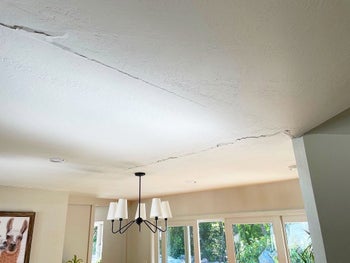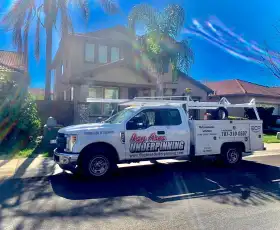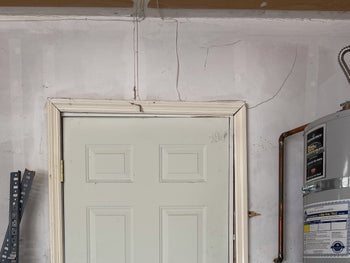My House Is Shifting – What Should I do?
Table of Contents
1. Why Is My House Shifting?
2. Causes Of Uniform Foundation Settlement
3. Causes Of House Shifting (Differential Foundation Settlement)
4. Signs Your House Is Shifting And Experiencing Differential Settlement
5. What To Do If Your House Is Shifting
6. Repair Options For Differential Foundation Settlement (House Shifting)
Is your house shifting? If so, this article will help you understand why houses settle into the soil, why that’s not always a bad thing, why it’s sometimes a bad thing, how you can spot the signs of settlement, and finish up with a discussion of the repair options available for foundations that are settling unevenly.
Why Is My House Shifting?
Foundations are heavy and when they’re placed on top of soil they press down on it. This causes the soil to compact and this compaction causes the foundation to settle very slightly into the soil. This is perfectly normal and nothing to worry about.
All structures built atop soil – without exception – will experience some degree of foundation settlement. Both the type of soil and the type of foundation affect the amount of settling a foundation experiences.
Foundation settling is inevitable, and as long as it’s only a very small amount of evenly distributed uniform settlement, there’s no reason to worry. The problems arise when a structure experiences what’s referred to as differential settlement . Differential settlement is what causes house shifting and structural damage. So, let’s take a closer look at the difference between uniform and differential settlement.
Uniform Settlement
With uniform settlement all the sections of the building are settling at the same rate. This is completely normal and usually isn’t a problem.
Differential Settlement
Differential settlement happens when not all sections of a building are settling at the same rate. This puts stress on the foundation and distorts the home’s frame throwing everything out of plumb. When this happens you’ll start to notice problems like ceiling cracks, windows and doors that stick, sloping floors, and wall cracks. Severe differential settlement is a sign that the soil under the foundation isn’t capable of supporting it. This can be remedied via underpinning.
Read more about – What is foundation settlement?
Causes Of Uniform Foundation Settlement
The primary cause of uniform foundation settlement is the building’s weight pressing down on the soil. If the entire building is sitting stop the same type of soil, the weight is evenly distributed (i.e. no part of the building is significantly heavier than the other parts), and there’s good drainage around the entire foundation, there will be a certain amount of uniform settlement and this is perfectly normal. While uniform settlement can cause minor cracks, it doesn’t usually cause any structural damage.
Causes Of House Shifting (Differential Foundation Settlement)
The most common causes of house shifting (i.e. differential foundation settlement) are,
- Improperly compacted soil prior to construction. Foundations need to be built on top of compacted soil. However, once soil is disturbed, it’s no longer compacted and increases in volume. If you build a structure on top of it you’re going to have problems down the road.
- Expansive soil. Expansive soils are those that swell when they get wet and shrink when they dry out. This seasonal swelling (some soils swell up to 10%) and shrinking creates soil movement and, over time, this puts a lot of stress on a foundation and can cause structural damage. Special care needs to be taken when building foundations on top of expansive soil.
- Changes in weather. If a foundation is built on top of expansive soil during a dry season, the soil will expand when the wet season arrives. When the dry season comes around again, the soil shrinks once more. Clay soils are particularly susceptible to this kind of expansion and contraction.
- Poor Drainage. Poor drainage is probably the leading cause of foundation problems. Excess water in the soil around a foundation softens the ground, and this leads to foundation settlement. Yes, gutters are helpful, but they have to be installed correctly and with extensions, if necessary.
- Extensive digging. Picture someone sitting in a lawn chair outside on the grass somewhere. If you dig a hole too close to the chair, it will eventually fall into it. The same thing can happen with a foundation if you start digging a hole for a swimming pool – let’s say – too close to your home. If you’re not careful, the hole can destabilize your foundation. When this happens, you’ll get differential settlement.
- Earthquakes. We probably don’t need to explain to you how earthquakes can cause severe differential settlement. However, even small earthquakes have the ability to cause differential settlement.
- Floods. Water is one of nature’s most powerful forces. Even slowly moving water has the ability to separate a home from its foundation. If the piers under a foundation don’t go all the way down to the load-bearing strata, flood water can easily shift them out of position.
- Soil creep. Very slowly, over time, soil on a slope will eventually make its way downhill. This happens because of gravity. Differential settlement caused by soil creep is a fairly common feature of homes built on hillsides.

Signs Your House Is Shifting And Experiencing Differential Settlement
- Doors and windows are sticking and/or don’t close properly. If your house is shifting everything will be slightly out of alignment, and this includes doors and windows.
- Walls that are pulling away from ceilings and floors. This happens because when a house is shifting it isn’t moving in sync. This can cause the walls to separate from the ceiling and/or floor.
- Uneven floors. Another sign a house is shifting is sloped floors.
- Cracked walls. Very thin hairline cracks in walls may not be anything to worry about. However, larger cracks should be inspected by a foundation repair professional.
- Bowed walls. Bowed walls curve inward. This is usually caused by expansive soil or hydrostatic pressure pushing against the walls of the foundation.
- Cracked floors. Not all floor cracks are a sign of foundation damage. A crack that’s limited to one tile was probably created when something fell on it. However, a floor crack that goes all the way across the floor – from wall to wall – is a common sign of foundation damage.
- Torn wallpaper. Torn wallpaper may indicate that something has shifted behind the wall covering.
- Wall rotation. When the soil under a foundation is saturated with water, the outside edge of the foundation sinks into the soil while the inside edge pulls up. This causes the wall to rotate.
- Diagonal cracks above doors and windows. Watch for cracks that run diagonally from the corners of doors and windows up toward the ceiling. If these are very fine hairline cracks, it could just be normal settling. However, if they’re larger, it might be a good idea to get them checked out by a foundation repair specialist.
- Molding that has separated from the wall and ceiling. This happens because when a house is shifting, things aren’t moving in sync.
- Stairstep cracks in brick. This is a clear sign that your house is shifting.
- Chimneys and/or porches are separating from the rest of the house. While this might be just a problem with the foundation under the chimney or porch, it could be a sign your home’s foundation is in trouble.
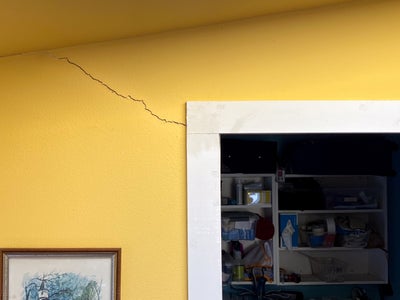
What To Do If Your House Is Shifting
It’s no understatement to say that the structural integrity of your home rests on the soundness of its foundation. If you’ve noticed any of the problems we’ve listed above – or even something not mentioned – be sure to contact a foundation repair specialist right away and ask them to come out for an inspection. This will usually take no more than an hour and then you’ll know for sure what’s wrong and how to fix it.
If you’re thinking about hiring a contractor to do the repair, make sure they are properly licensed, insured, and offer a warranty.
Repair Options For Differential Foundation Settlement (House Shifting)
The good news is that house shifting caused by differential settlement can usually be repaired. In other words, most foundations do not need to be replaced. Below, we go over the four most common methods for repairing foundations. For more information, check out our service pages for each one.
Resistance piers
Resistance piers are also referred to as push piers. They’re made out of heavy duty steel and are driven down into the load-bearing soil using the weight of the building and hydraulic pressure. At that point, hydraulic jacks are placed on top of them in order to raise the structure back up to where it was before.
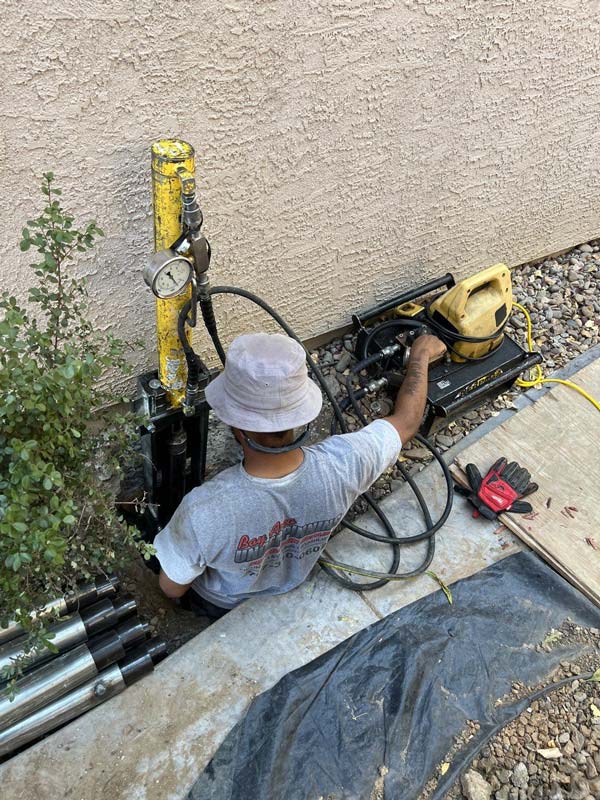
Helical piers
Helical piers get their name from the fact that they’re shaped like helices, and are spun down into the load-bearing soil. Their load-bearing capacity is determined by the amount of torque required to drive them down into the soil. Once the piers are in place, hydraulic jacks are placed on top of them and the building is lifted back up.
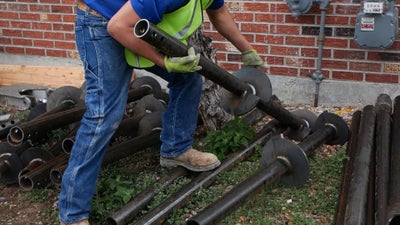
Drilled concrete piers
Homes built on hillsides are susceptible to differential settlement caused by poor compaction and something called soil creep. This problem can be fixed by drilling concrete piers deep down into the bedrock under the foundation.
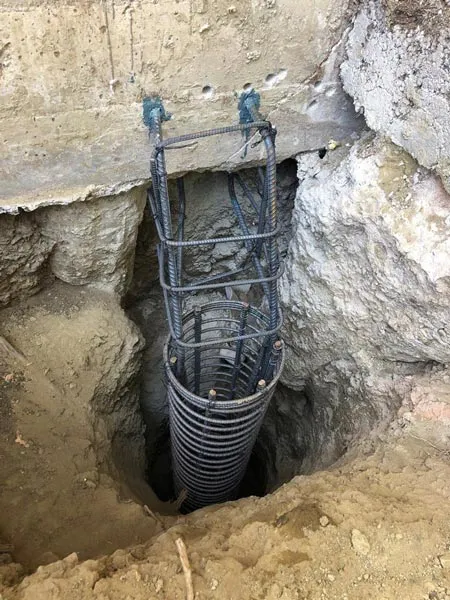
Slab piers
Slab piers are resistance piers or helical piers that have been installed via small holes cut into the floor or slab. Once they’re in place, anchors are inserted through the holes until they reach load-bearing soil. Heavy duty steel brackets then attach the anchors to the slab. Slab piers are sometimes used to provide additional support to interior slabs after the foundation is lifted using piers placed around the perimeter of the foundation.
Learn more – Foundation Stabilization Methods
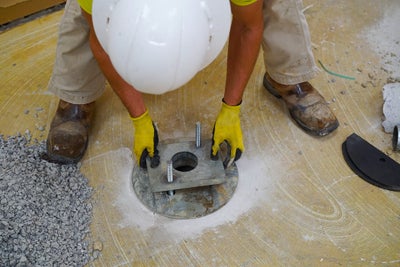
If your house is shifting, just remember that all foundations built atop soil will experience a certain amount of settlement over time. If this settlement is minor and uniform, there’s usually nothing to worry about. The problem is differential settlement because it has the ability to cause your home serious structural damage. Since repairing differential settlement is not a DIY repair, you’ll need to contact an experienced foundation repair specialist. The good news is that most foundations experiencing differential settlement can be repaired.
If your house is shifting and you’re in our service area in Northern California, contact us today for a free inspection and estimate.
More Resources
Publish Date:
Last Modified Date:
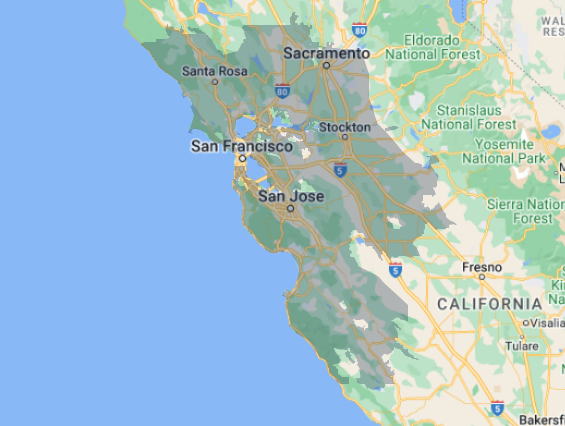
Our Locations
2333 Courage Dr. Suite C
Fairfield, CA 94533
1161 N Fair Oaks Ave
Sunnyvale, CA 94089

